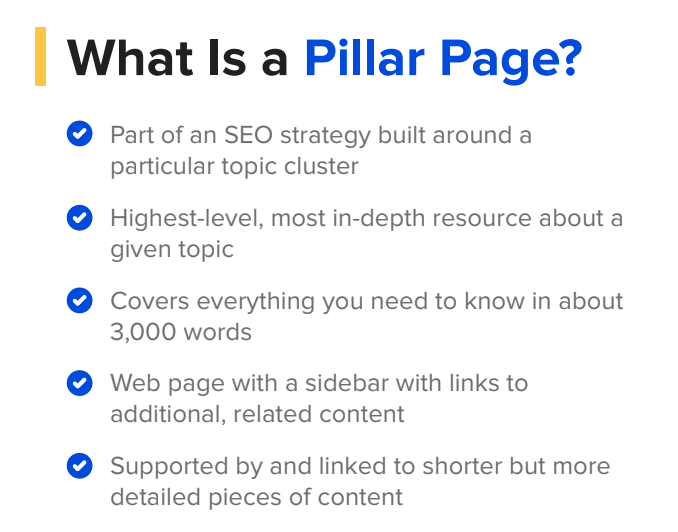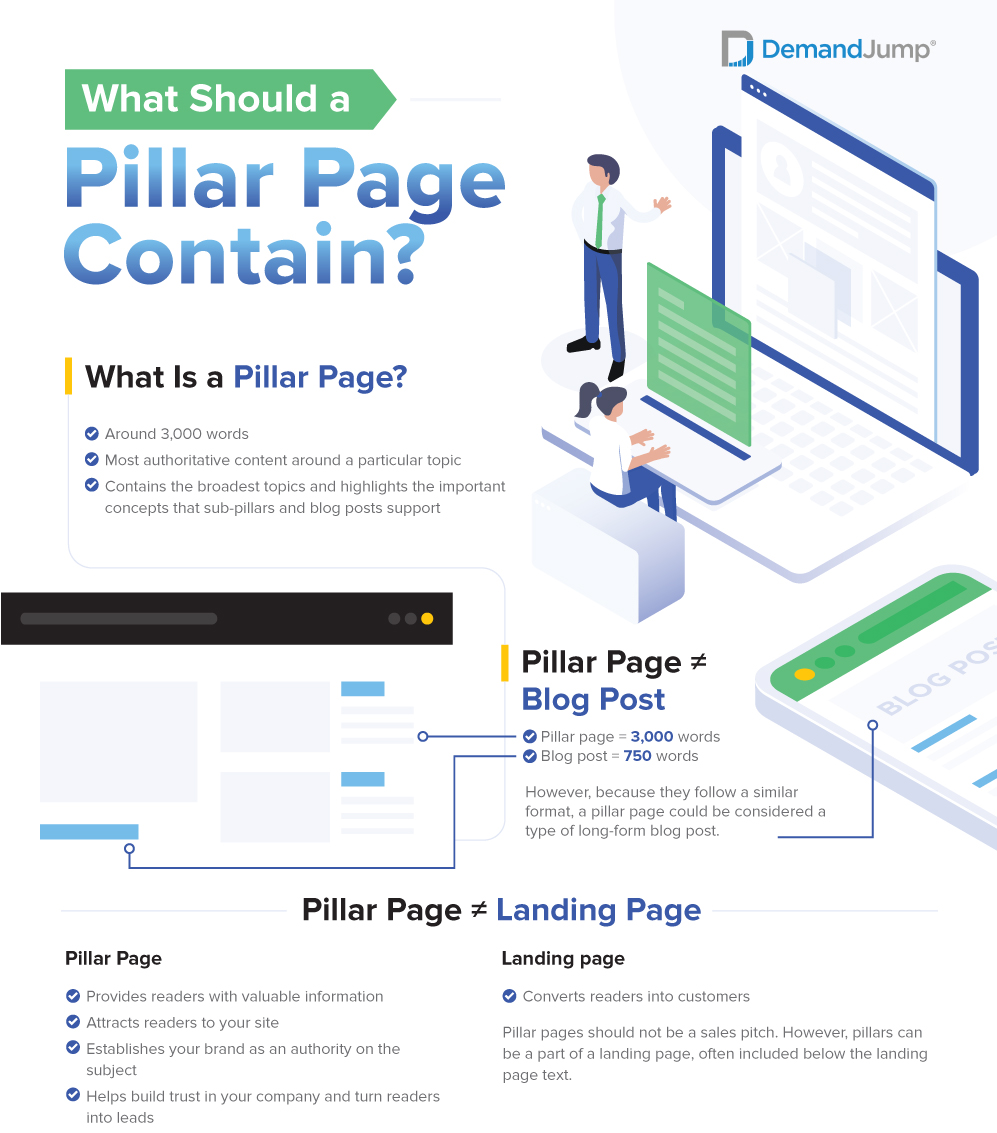How Long Should a Pillar Page Be?
June 25, 2020 •DJ Team

What is a Pillar Page?
Basically, a pillar page serves as the foundation for all other pages. It's the basis upon which a topic cluster is built. Pillar pages cover all aspects of a topic on a single page, leaving room for more in-depth reporting on blogs that are then linked to the pillar page. These content marketing pillars offer readers an overview of a specific topic. It's kind of like a road map or compass that will guide them toward the next bits of information they'd like to learn more about.
The pillar cluster model is an SEO strategy that focuses on topics, rather than just keywords. It's intentionally designed to simplify the way blogs are archived by creating content around a central theme or topic.

What is Pillar Content?
Think of your pillar strategy kind of like a spider web. Start building from the center; that's where you catch your initial visitors. As you weave your web out, you'll have various places where the web is tacked onto its surroundings; these sections serve as subsections from which your readers can derive greater insight and ideas that you have to offer. As the web grows, the more complex and intricate details will reside on the outside, but all of your points and topics always connect back to the center.
Pillar content should be relevant to your business, brand, and beliefs. The center of the web is an overarching idea that's usually quite broad. The parts of the web that are connected to the structure are more detailed topics, and the blogs that fill in those topics touch base on very specific elements within those categories.
How Do You Write a Pillar Page?
When it comes to pillar marketing, the most important thing to remember is that you're creating a central place from which other topics and ideas can be born. It all starts with an overarching theme; what's the one thing you want to rank for in search engines? Choose a broad topic, because you'll later go into detail about the specifics that relate back to this pillar concept as you write various blogs and pages.
Once you've captured your main idea, you can formulate a series of core, related topics. These terms should align with the main idea and provide support to the main topic. For example, if the main topic is something broad like "gum disease" and a secondary topic that aligns with this idea could be "gum disease prevention".
Now it's time to source subtopic content for each of your topic clusters. This is where you can really get into the meat of each idea you want to talk about. You might have dozens or even hundreds of ideas for each cluster; that's a good thing! Your goal is to answer your searchers' questions so you're seen as valuable to the search engines. If you're just starting out, you may choose to try a pillar page template to guide you.

How Long Should a Pillar Page Be?
A pillar page should be long enough to include all the relevant information on that broad topic, but not so long that you’re losing readers. There's really no right or wrong answer, but you're probably looking at something between 3,000 and 5,000 words. That may seem like a lot, but remember, you're trying to appease both your audience and the search engines, so the more detailed and in-depth your information is, the more valuable it will be.
If you're struggling with your digital marketing efforts, DemandJump is here to help. From pillar pages to full-blown content marketing strategies, we can help you devise growth-driven methodologies that make sense for your business. Start your free trial to see what topics you should attack, get outlines for blogs, and which keywords to add.
Featured Articles
Categories
- Attribution Tracking (13)
- Channel Optimization (11)
- Consumer Insights (68)
- Content Marketing (251)
- Data Science (8)
- Digital Marketing (6)
- Digital Transformation (26)
- Enterprise (10)
- Lead Generation (14)
- Market Intelligence (8)
- Marketing Analytics (39)
- Marketing Attribution (57)
- Marketing Management (153)
- Marketing Operations (86)
- Organic Search (222)
- Paid Search (52)
- Pillar-Based Marketing (63)
- Programmatic Advertising (9)
- SaaS Content (14)
- SaaS Marketing (29)
- Search Marketing (111)
- SEO Keyword Research (28)
- SEO Pillar (18)
- SEO Strategy (46)
- SMB (5)
- Website Content (12)


